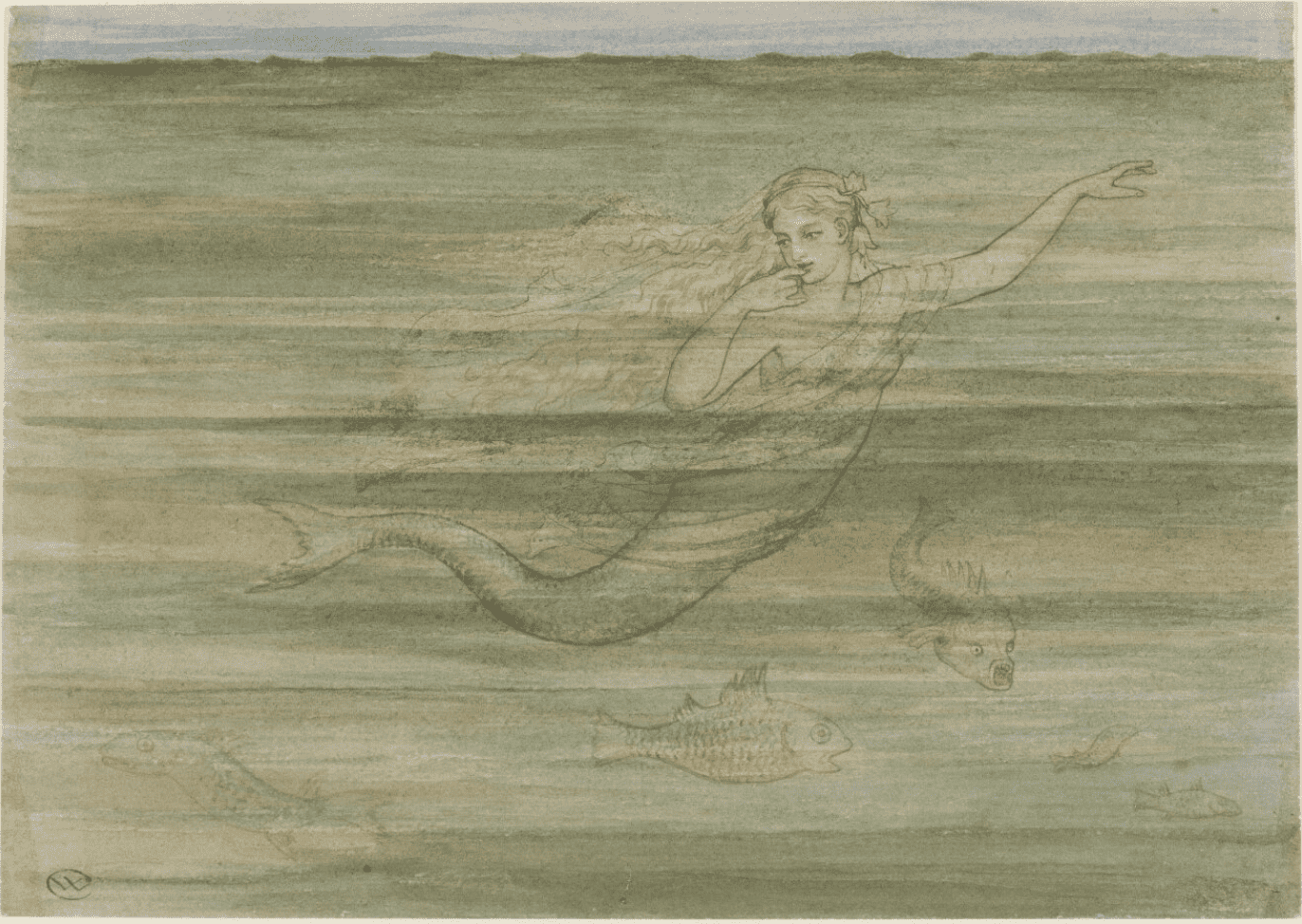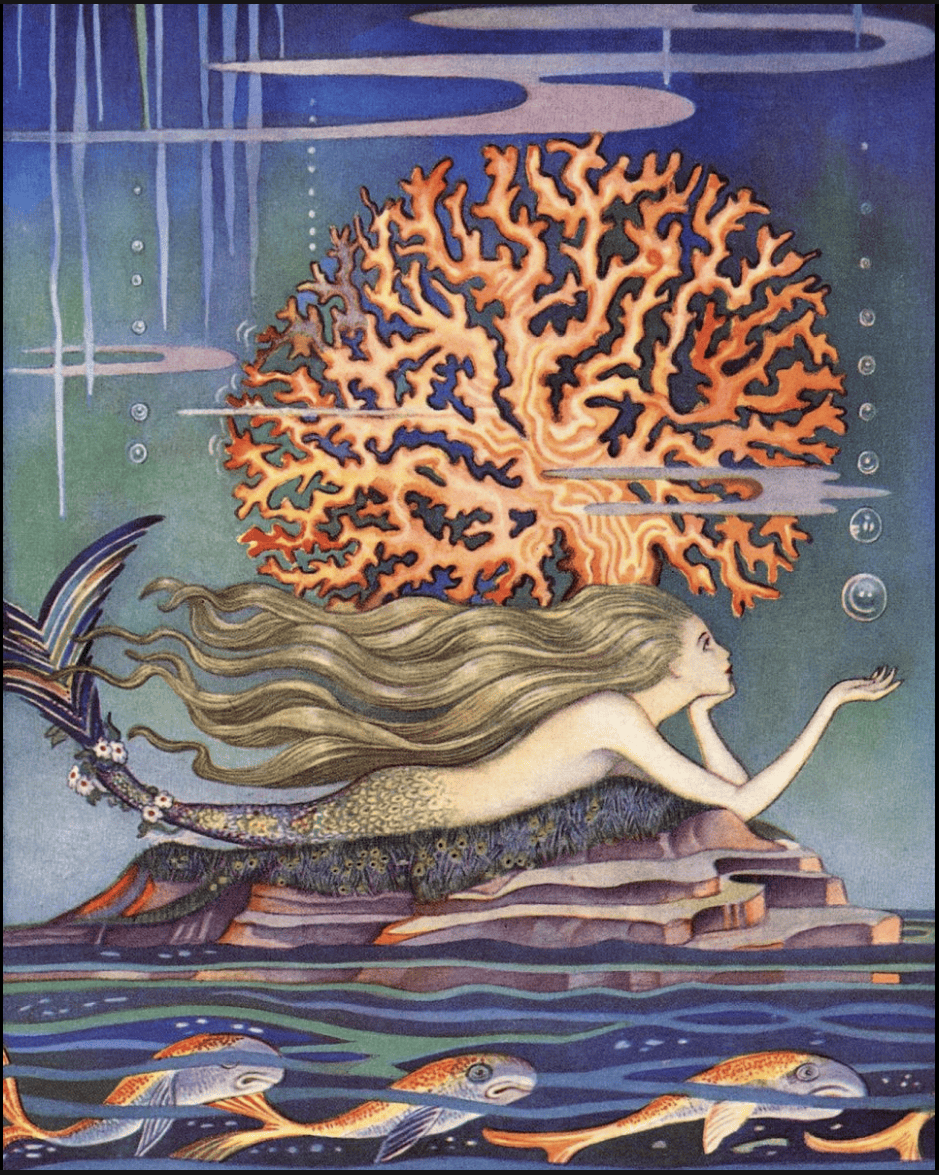Hans Christian Andersen’s The Little Mermaid (1837) – Review
The Sea King’s youngest daughter goes on an illustrious quest for a nobleman’s heart in order to live out a dream on land and for eternity as an immortal soul.

Spoiler Alert: This summary and review contains spoilers.
Additionally, some images and text may include affiliate links, meaning we may earn a commission or receive products if you make a purchase.
| Author | |
| Hans Christian Andersen | |
| Publisher | C.A Reitzel |
| Book’s Publish Date | 04/7/1837 |
| Genre | Young Adult, Fiction |
| Good If You Like | Fairytales and Lore
Period Pieces Gritty Origin Stories Hans Christian Andersen’s Thumbelina, The Princess on The Pea, or The Ugly Duckling |
| This Isn’t For You If | Want Something Light
Need A Predictable or Happy Ending |
The Little Mermaid
Plot Summary
A Danish tale that tells the story of a quiet yet inquisitive mermaid Princess who longs to immerse herself in the world on land. The little mermaid is bereft of legs, so she must wager her voice for a pair in pursuit of the ship-wrecked Prince. Her wish to spend the rest of her shortened human life with him is hindered by a human princess from another royal daughter in a neighboring city.
Other Noteworthy Facts & Moments
- The Sea King was a widower who lived with his elderly mother
- Each of the six sisters are a year apart; the littlest mermaid being the youngest
- Mermaids and daughters of the air live for three-hundred years
- Only humans have an immortal soul in this original story

Highlights
Whimsical Descriptions
The author of this beloved tale uses wondrously curious similes like, “The earth itself was the finest sand, but blue as the flame of burning sulfur.” Creative juices flow more effortlessly than the high tides of a tsunami when Andersen depicts the life of underwater royalty. The protagonist is surrounded by beautiful creations, which include sea crystallization like pearls and coral. The author makes most things and people seem ethereal. Some of the ways Christian Hans Andersen does this is by using words describing naturally occurring things like rose leafs and seas in order to detail the pristine beauty of the protagonist. The way language moves in this short story is in constant motion, and any avid reader can visualize the literal movement attempting to be conveyed within this story.
Symbolic Sacrifices Under The Sea
Whether it be the loss of a mermaid’s song or cutting luxurious flowing hair, there are multiple instances in which the emblematic mermaid barters for what they want. Originally, the little mermaid agrees to the Sea Witch removing part of her tongue so she could no longer sing. Even though Andersen tells the audience that she “sang more sweetly than them all,” the young princess was willing to lose her most valuable assets in her quest to gain the prince’s affection. After the Sea Witch’s horrid spells were cast, the little mermaid’s four sisters came to the rescue. The deal was an exchange requiring they all chop their prized strands.
What is a mythological siren lacking her skillful tunes to lull unsuspecting sailors to their deaths? Consider the archetypal gorgeous debutante without copious amounts of radiant dead cells hanging down her back or pinned above her neck under a diadem. In this work of fiction, the author shows the reader not only how hellbent the protagonist is but also how selfless and morally intact her sisters are. In large numbers, people are capable of anything and everything, mermaids too, apparently.
On The Fence
Is It For Women For Real?
From a feminist perspective, the short story actually engages in ideas of female autonomy almost a century before women could even vote (in the United States). Hans Christian Andersen employs methods of showing the Little Mermaid’s obdurate nature and also places consequences in the plot for her to stumble upon. Despite this, her explorative disposition is not even framed in a bad light. This work seems more of a conscientious weighing of situational cause and effect. Unfortunately, the princess’ freedoms depend on a man’s acceptance, but he is also the subject of her deep affections. Strangely for this time, too, she chases him, which subjugates certain negative ideas about how women were viewed women during this time. Andersen conducts a balancing act with certain details therein that can be appreciated almost two centuries later.
To Treat A Princess Like A Dunce
She told you, hun! The Sea Witch literally said, “It is very stupid of you, but you shall have your way, and it will bring you to sorrow, my pretty princess. You want to get rid of your fish’s tail and to have two supports instead of it, like human beings on Earth, so that the young prince may fall in love with you and that you may have an immortal soul.” With this information from an actual underwater goblin, you still decide to go on because of desperation. By the end of the story, the mermaid princess will be forever subjected to monitoring human children hoping to observe well-mannered ones. She must serve a life sentence after diving into the sea from a ship where her lover was in bed with his human wife.
This was, of course, after he had let the sea princess accompany him everywhere, sleep outside his door on a velvet cushion in the palace, and even after having “kissed her hands a thousand times towards the palace.” Not only did the sea princess not know her worth, but also the author did her so wrong. She was exceptionally loyal and sweet, even entertaining his marriage until she was given a knife to stab him in bed. It could be bias from having had watched “The Little Mermaid” (1989), but this scenario seems tragically unfair; it is most definitely not giving fairytale. Now she has to float in the sky for three centuries unless her good child quota is met.

Question(s) Left Unanswered
- Why do both mermaids and daughters of the air live for three-hundred years?
- Why are humans the only ones with immortal souls; is there a religious association?


